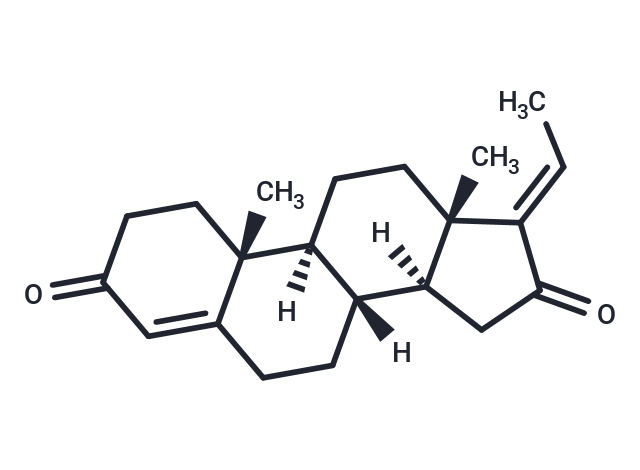 Your shopping cart is currently empty
Your shopping cart is currently empty

Bile acids are essential for solubilization and transport of dietary lipids, are the major products of cholesterol catabolism, and are physiological ligands for farnesoid X receptor (FXR), a nuclear receptor that regulates genes involved in lipid metabolism.1They are also inherently cytotoxic, as physiological imbalance contributes to increased oxidative stress.2,3Bile acid-controlled signaling pathways are promising novel targets to treat such metabolic diseases as obesity, type II diabetes, hyperlipidemia, and atherosclerosis.Guggulsterone, derived from resin of the guggul tree, is a competitive antagonist of FXR bothin vitroandin vivo.4Thecisstereoisomer of guggulsterone, (E)-guggulsterone, decreases chenodeoxycholic acid (CDCA)-induced FXR activation with an IC50value of 15 μM.5,6By inhibiting CDCA-induced transactivation of FXR, guggulsterone lowers low-density lipoprotein cholesterol and triglyceride levels in rodents fed a high cholesterol diet.4

| Pack Size | Price | USA Warehouse | Global Warehouse | Quantity |
|---|---|---|---|---|
| 1 mg | $43 | - | In Stock | |
| 5 mg | $94 | - | In Stock | |
| 10 mg | $136 | - | In Stock | |
| 25 mg | $225 | - | In Stock | |
| 50 mg | $332 | - | In Stock | |
| 100 mg | $493 | - | In Stock |
| Description | Bile acids are essential for solubilization and transport of dietary lipids, are the major products of cholesterol catabolism, and are physiological ligands for farnesoid X receptor (FXR), a nuclear receptor that regulates genes involved in lipid metabolism.1They are also inherently cytotoxic, as physiological imbalance contributes to increased oxidative stress.2,3Bile acid-controlled signaling pathways are promising novel targets to treat such metabolic diseases as obesity, type II diabetes, hyperlipidemia, and atherosclerosis.Guggulsterone, derived from resin of the guggul tree, is a competitive antagonist of FXR bothin vitroandin vivo.4Thecisstereoisomer of guggulsterone, (E)-guggulsterone, decreases chenodeoxycholic acid (CDCA)-induced FXR activation with an IC50value of 15 μM.5,6By inhibiting CDCA-induced transactivation of FXR, guggulsterone lowers low-density lipoprotein cholesterol and triglyceride levels in rodents fed a high cholesterol diet.4 |
| Molecular Weight | 312.45 |
| Formula | C21H28O2 |
| Cas No. | 39025-24-6 |
| Color | White |
| Appearance | Solid |
| Storage | keep away from direct sunlight,keep away from moisture | Powder: -20°C for 3 years | In solvent: -80°C for 1 year | Shipping with blue ice/Shipping at ambient temperature. |
| Solubility Information | DMF:PBS (pH 7.2) (1:4): 0.2 mg/mL (0.64 mM), Sonication is recommended. DMSO: 0.25 mg/mL (0.8 mM), Sonication is recommended. DMF: 10 mg/mL (32.01 mM), Sonication is recommended. Ethanol: 1 mg/mL (3.2 mM), Sonication is recommended. |
| Size | Quantity | Unit Price | Amount | Operation |
|---|

Copyright © 2015-2025 TargetMol Chemicals Inc. All Rights Reserved.